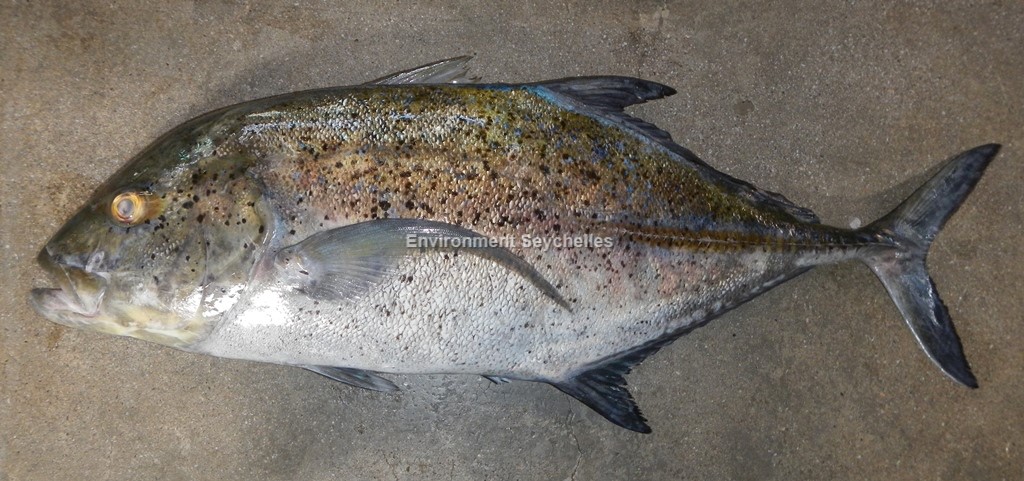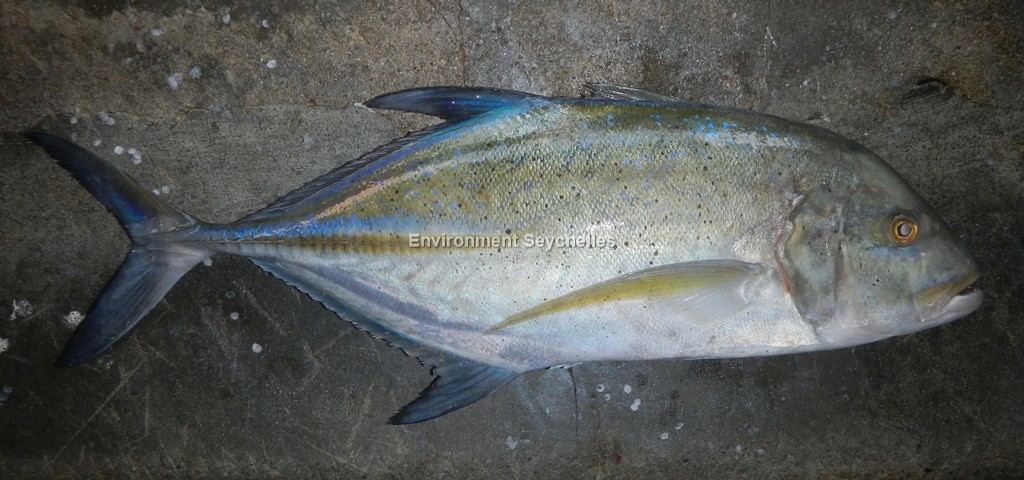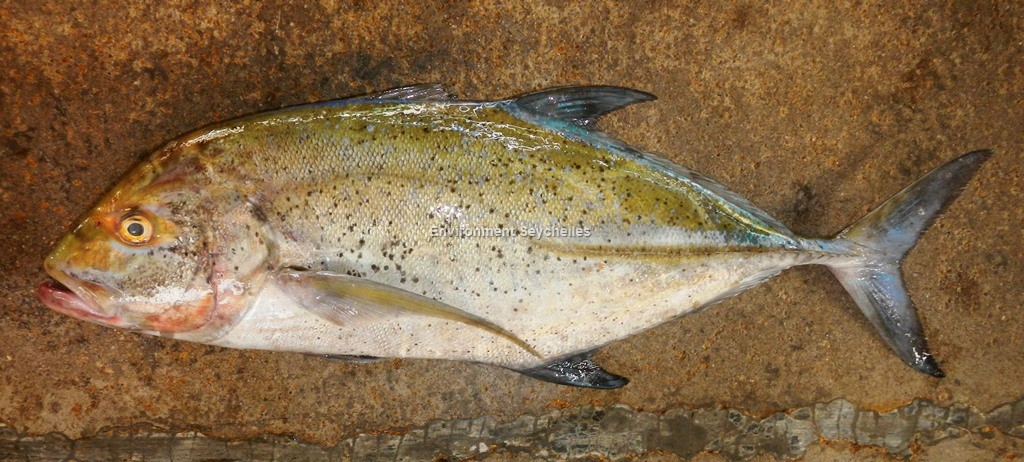Description:
Dorsal spines: 9; Dorsal rays: 21-24; Anal spines: 3; Anal rays: 17-21.
Body oblong and compressed. Dorsal profile moderately convex to second dorsal fin, ventral profile only slightly convex. Breast completely scaly. Snout moderately long.
Posterior adipose eyelid extends onto eye to rear border of pupil in large adults. Upper jaw with outer row of strong canines widely spaced in adults, and an inner band
of small villiform teeth; lower jaw with a single row of strong conical teeth widely spaced in adults.
Colour: adults with head and dorsal half of body greenish yellow, suffused with blue, and covered with small blue black spots. Lightening to silvery white ventrally.
Median fins electric blue. Pectoral fins hyaline with a central yellow streak. Pelvic fins light grey to whitish. Juveniles and young adults, head and body silvery grey
and fins pale to dark dusky, except pectoral fins which are yellow.
Size:
Maturity: Lm 35cm SL. Range unknown. Max Length: 117cm FL. Commonly 60cm TL.
Habitat and Ecology:
Occupies the entire water column within its depth range but is primarily associated with benthic and demersal communities in tropical waters (depth 0-190m). Adults are
invariably associated with reef habitats throughout its broad range, and are most common in offshore areas. Estuaries, sand flats, and lagoons provide nursery habitat
for juveniles. Found singly, in pairs, or in small groups. Feeds primarily on reef fishes and also crustaceans.
Fishery Status:
This species is not protected or subject to fishery regulations. It is caught in the handline fishery where it is an occasional and not numerous component of the catch.
Notes:
References:
Fischer, W. & G. Bianchi (eds), (1984). FAO species identification sheets for fishery purposes. Western Indian Ocean; (Fishing Area 51). Prepared and printed with the
support of the Danish International Development Agency (DANIDA). Rome, Food nd Agricultural Organization of the United Nations, vols 1-6: pag. var.
Froese, R. & D. Pauly. Eds. (2019). FishBase. https://www.fishbase.se/summary/1906 (19/05/19).
Heemstra P & Heemstra, E. (2004). Coastal Fishes of Southern Africa. NISC SAIAB. ISBN: 1-920033-01-7.
Smith-Vaniz, W.F. & Williams, I. (2016). Caranx melampygus (errata version 2017). The IUCN Red List 2016: http://dx.doi.org/10.2305/IUCN.UK.2016-3.RLTS.T20430679A65927840.en. (19/05/19).
Citation:
Nevill, J.E.G. (2019). Caranx melampygus, Bluefin trevally. Seychelles Seatizens. www.seatizens.sc. https://seatizens.sc/species/caranx-melampygus-cuvier-1833/ (edited 23/06/22).




There are no comments